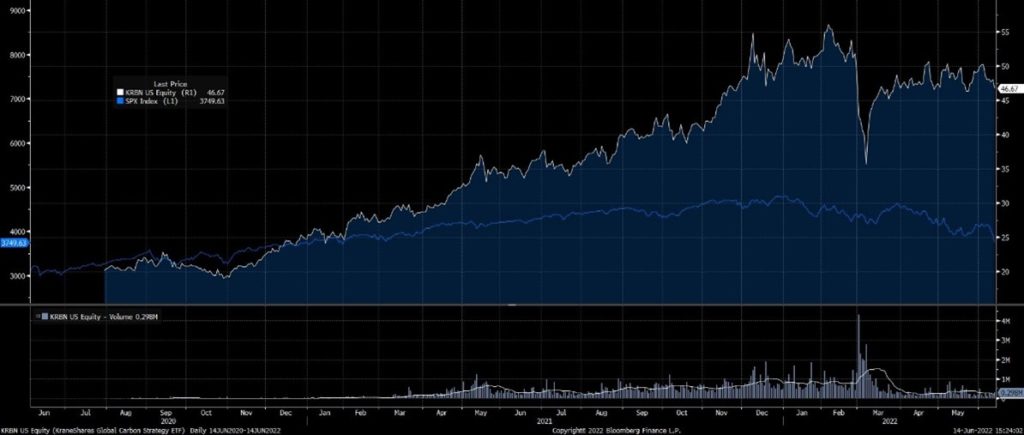Reducing overall emissions is one of the greatest issues facing individuals and governments globally. This is evident through a focus on ESG by investors, and governments creating a cost through carbon credits to internalise externalities.
ESG stands for Environmental, Social and Governance and within investing, refers to investors seeking these factors from companies they invest in.
An ESG approach to investing can be implemented using negative screening (removing stocks with poor ESG ratings) or positive screening (investing in stocks with strong ESG ratings).
Many investors place significant focus on the environmental component of this and choose to reduce or eliminate environmental polluters from their portfolio. Instead them may choose to invest in companies working to reduce the reliance on fossil fuels.
Governments restrict carbon emissions of businesses through carbon credits, but these can also be used as source of revenue.
So, what are carbon credits and how are companies profiting by simply meeting environmental regulation?
What are Carbon credits?
By definition “A carbon credit is a permit that allows the owner to emit a certain amount of carbon dioxide or other greenhouse gases. One credit permits the emission of one ton of carbon dioxide or the equivalent in other greenhouse gases.” Investopedia
This would seem to enforce a firm cap on the level of emissions that any one company can emit, but the way that they work in practice is quite different.
These credits are tradeable, so there is a market for companies that know their emissions will go over their allowed amount. Rather than reducing their emissions they can purchase carbon credits from companies that are emitting less than their allowance.
How are Carbon credits created?
Carbon credits are created through investing in projects that reduce greenhouse gas (GHG) emissions or decrease the reliance on fossil fuels.
Examples of projects that reduce GHG emissions would include reforestation and methane capture.
Examples of projects reducing the reliance on fossil fuels include developing renewable energy through wind farms, solar and electric vehicles.
How do companies profit from this?
As mentioned previously, companies can buy and sell carbon credits, and it can be rather profitable.
One of the most well-known examples of this is Tesla who profited US$679 million from carbon credit sales in Q1 2022. This accounts for more than 20% of its profits for that quarter.
The graph below shows the revenue from carbon credit sales over the past two years.

Source: carboncredits.com
Carbon credits are quite commonly traded and its not only by businesses. Some investors will trade in carbon credits in a similar way to physical commodities. With no intention of receiving the underlying, but seeking to profit from price movements and to square their position before the delivery dae.
One such way to invest in carbon credits is through an ETF such as KraneShares Global Carbon Strategy ETF(KRBN).Its performance over the past two years is shown in graph below along with the S&P500 for reference.

Source: Mason Stevens, Bloomberg
KRBN is the largest carbon credits ETF as of 16/06/2022 and provides exposure to cap-and-trade carbon allowances via futures.
Closing remarks
It may be deemed that the benefit of one company reducing emissions is reduced by this enabling another company to pollute more than their allocated amount (through trading carbon credits).
However, there is also a case to make that this provides an extra incentive to reduce pollution. If they exceed the cap it will cost them financially, but if they are below the cap, they can increase revenue. It also means emerging cleaner industries can be subsidised by dirtier entities rather than requiring government support during both their developmental and operational phases.
As the price of carbon credits increases, the cost of polluting increases which will lead to an increased need for companies to explore green alternatives. Carbon credits are also an important tool to ensure the continued development of R&D across many industries.
The views expressed in this article are the views of the stated author as at the date published and are subject to change based on markets and other conditions. Past performance is not a reliable indicator of future performance. Mason Stevens is only providing general advice in providing this information. You should consider this information, along with all your other investments and strategies when assessing the appropriateness of the information to your individual circumstances. Mason Stevens and its associates and their respective directors and other staff each declare that they may hold interests in securities and/or earn fees or other benefits from transactions arising as a result of information contained in this article.



